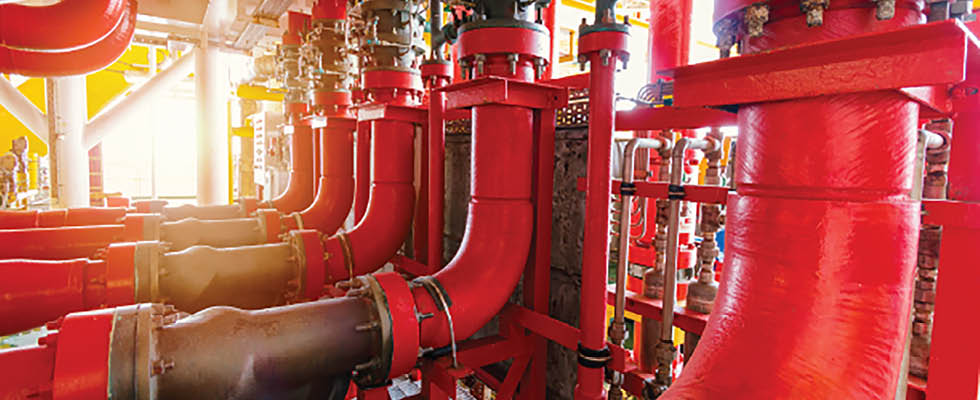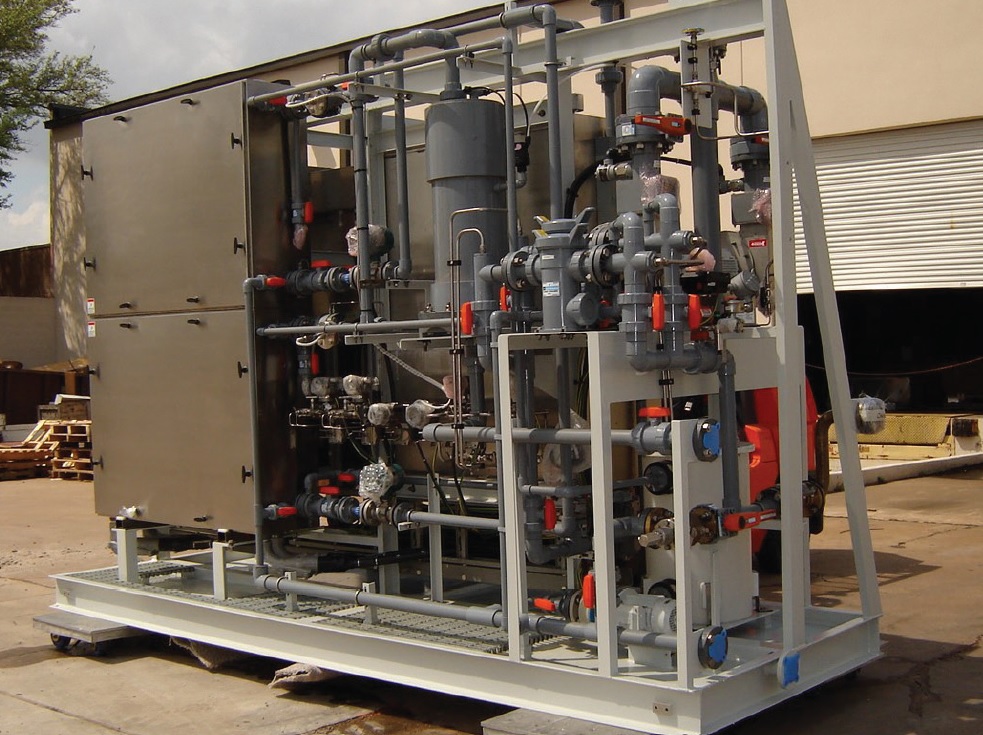
For coastal and offshore operations that prevent marine biofouling with water disinfection, seawater electrochlorination systems that generate sodium hypochlorite are reliable and efficient and need only seawater and electricity. As ocean waters warm, the demands placed on those systems become more intense. Many offshore and coastal operators are reevaluating their approach to water disinfection to keep up with the increase in marine biofouling due to warmer ocean temperatures.
Rising Ocean Temperatures & the Effect on Marine Biofouling
A 2018 study from Nature showed that since 1925, marine heat waves have become 34% more frequent and are lasting longer. According to NASA research, the last 10 years were the ocean’s warmest decade since at least the 1800s, and 2022 was the ocean’s warmest recorded year.
These marine heat waves are having measurable localized effects on oil and gas operations both on- and offshore. Depending on local marine life, an increase in water temperature can have a stimulating effect on algae, barnacles and mollusks, which presents a problem for oil and gas operators trying to keep such life from growing inside seawater cooling circuits. Marine life within cooling circuits creates clogging, which in turn increases temperatures even more.
As an example, one offshore facility in northern Mexico operating off the North American Pacific Coast, which has been experiencing a persistent marine heat wave, is seeing average summer water temperatures 4 C higher than they were before the heat wave. This operation is also experiencing increased biofouling.
Biofouling Control Options for Offshore & Coastal Operators
Offshore operators use sodium hypochlorite (hypo) as a method to keep marine life from building up in their systems, and they most often use seawater electrochlorination for on-site hypo generation because, among other reasons, using bulk hypo is costly and risky due to logistics in offshore settings. To combat increased biofouling, facilities can increase capacity in two ways: stacking more units to generate a greater volume of hypo or generating a more concentrated hypo by increasing the power of the unit(s).
Operators can turn to shock dosing (increasing the dose from 1-2 [parts per million] ppm to 5-10 ppm for a brief time) if the heat is a temporary situation, but long heat waves are likely to outstrip the capacity of shock dosing.
For coastal/onshore operations that use bulk sodium hypochlorite, a rise in water and ambient temperatures is also affecting stored hypochlorite. Degradation of sodium hypochlorite is correlated with a rise in temperature, so as operations use more hypo to keep up with increased biofouling, they are also racing against the clock to use the stored hypo before it degrades to the point of being ineffective. In elevated temperatures, material degradation can happen in as little as eight days. This puts a strain on operating costs, supply chain logistics and storage management. Many onshore operators use seawater electrochlorination to ensure a steady, cost-effective supply of hypo that is not subject to degradation.
Seawater Electrochlorination Is a Powerful Weapon
On-site hypo generators can be upgraded to increase capacity when the rate of biofouling increases, and they are also a better alternative to bulk sodium hypochlorite, especially when logistics and rising water temperatures are a concern. The benefits of on-site generation include:
- Precise and immediate control: Within the capability of the installed system, operators have a range of adjustment for instantaneous change in hypo production to treat an increase in biofouling. Outside of the installed capability range, operators can elect to add capacity by adding devices.
- Better performance against biofouling: Seawater electrochlorination systems inject a steady dose of sodium hypochlorite into all areas where marine biofouling occurs, preventing buildup from starting.
- Safer: On-site seawater electrochlorination systems eliminate the need for storage and transportation of high strength sodium hypochlorite (a hazardous chemical).
- Cost-effective: The cost of generating a pound of chlorine using an on-site electrochlorination system is typically much less than the cost of purchasing and transporting a pound of chlorine.
- More sustainable: Due to greatly reduced waste and less environmental impact, on-site electrochlorination offers greater sustainability.
- Less vulnerable supply: By generating its own sodium hypochlorite using just electricity and seawater, a plant does not have to buy disinfectant from the market, which is subject to price fluctuations, delivery delays and storage degradation.
Maintaining a Seawater Electrochlorination System
A seawater electrochlorination system can last as long as 30 years or as short as one—it all depends on how well it is maintained. As the electrolytic cell is a significant portion of the system cost, it is important to have a solid cell maintenance protocol.
For maintenance, regular system monitoring is crucial, as well as following manufacturer maintenance guidelines. Maintenance is centered on keeping the electrolytic cells clean, and how often they will need cleaning will depend in part on specific site conditions.
For example, if a seawater electrochlorination system is located near other industrial operations, the seawater may have a higher content of iron or manganese. Also, salinity in seawater varies from location to location and will have a varying impact on how often electrolytic cells need cleaning.

For some systems, maintenance includes manually cleaning the electrolytic cell(s) with an acid wash. Acid washing requires the system to be placed out of service during cleaning. The used acid solution must then be neutralized or transported for disposal. Generally speaking, the cells are cleaned about once every month.
More advanced systems may include a reverse polarity mechanism that can safely clean electrode surfaces. Instead of using an external acid, the polarity of the current passing through the cell is reversed, so positive becomes negative and negative becomes positive. When this occurs, hardness deposits are dissolved from the surface of the electrodes, eliminating the need for external acid washing.
The Cost of a Seawater Electrochlorination System vs. Bulk Sodium Hypochlorite
The cost of a seawater electrochlorination system can range from $100,000 to a few million dollars, based on the scope and size required. These capital costs can be recouped through operational savings, especially when considering the cost of purchasing bulk sodium hypochlorite. The cost of generating sodium hypochlorite from seawater electrochlorination varies greatly depending on the location, but it will always be based on the cost of energy since this is the only input required (aside from seawater).
As a rule of thumb, the system consumes about 4 to 4.5 kilowatthour (kWh) per kilogram (kg) of hypochlorite produced, excluding any auxiliary equipment such as booster pumps or dosing pumps. Depending on how much disinfectant a plant needs and what it typically pays for bulk, plant operators can calculate the savings the plant would realize from generating its own versus buying and storing chemicals.


